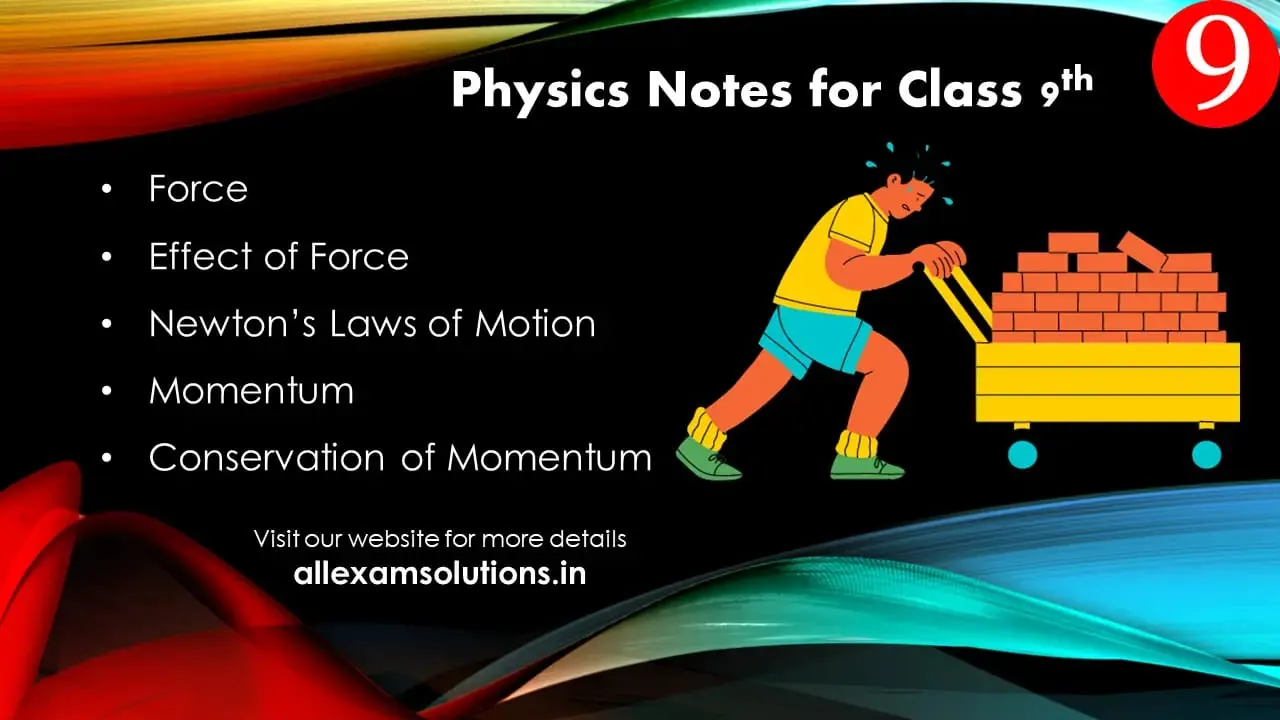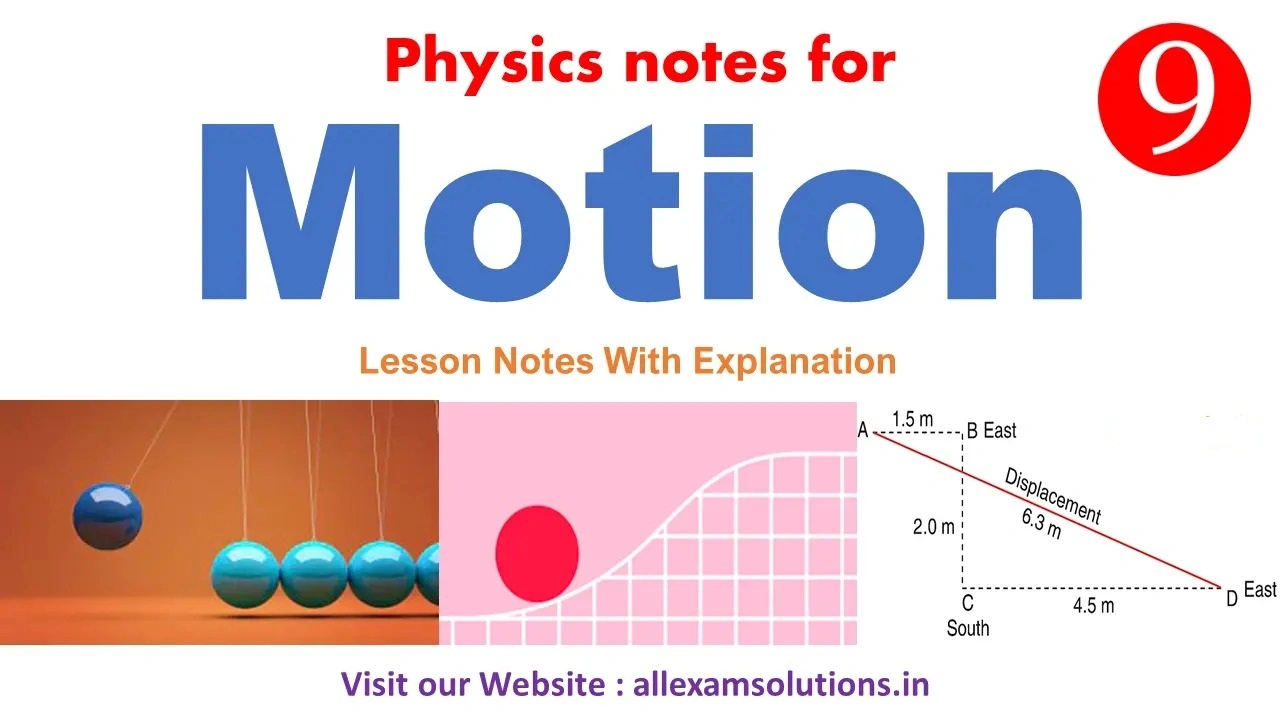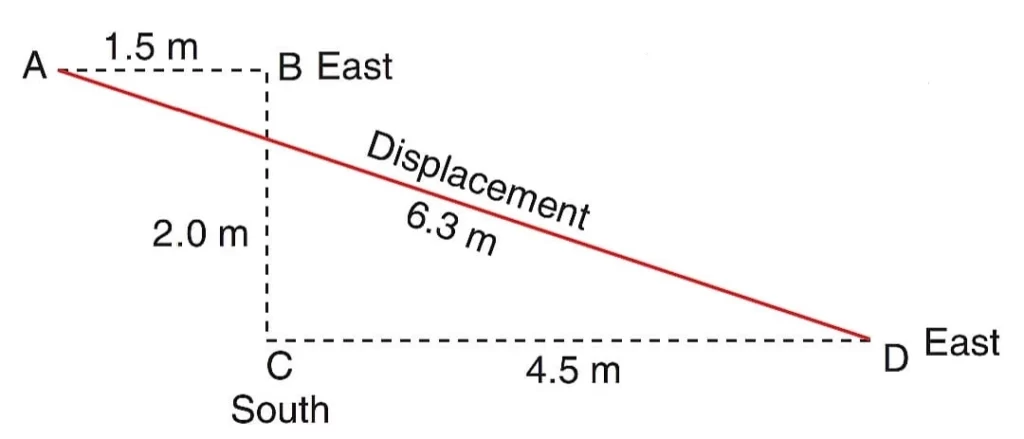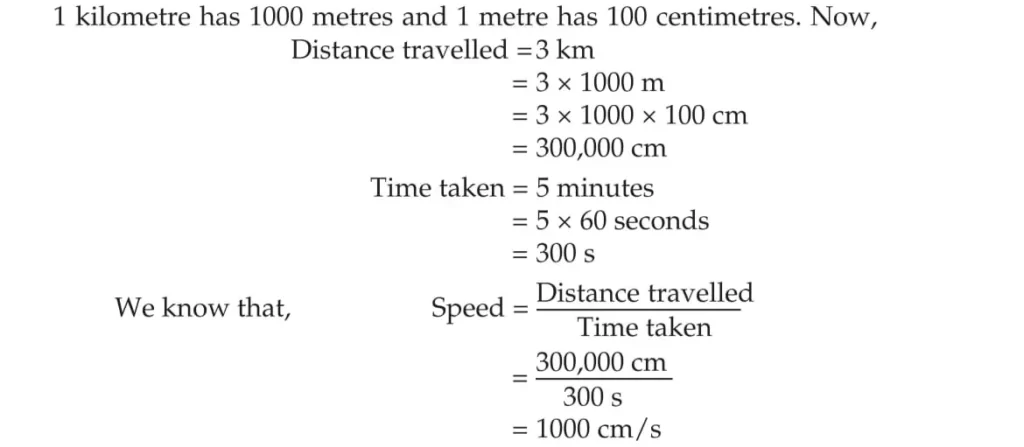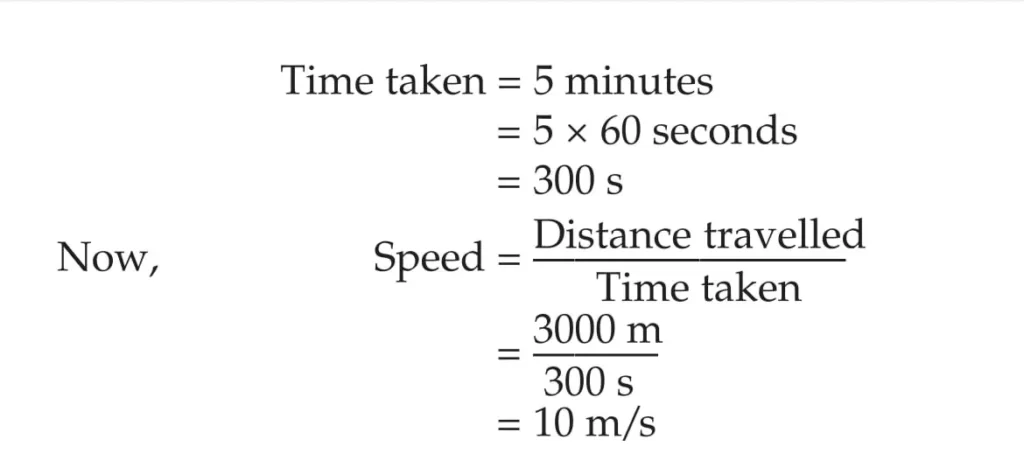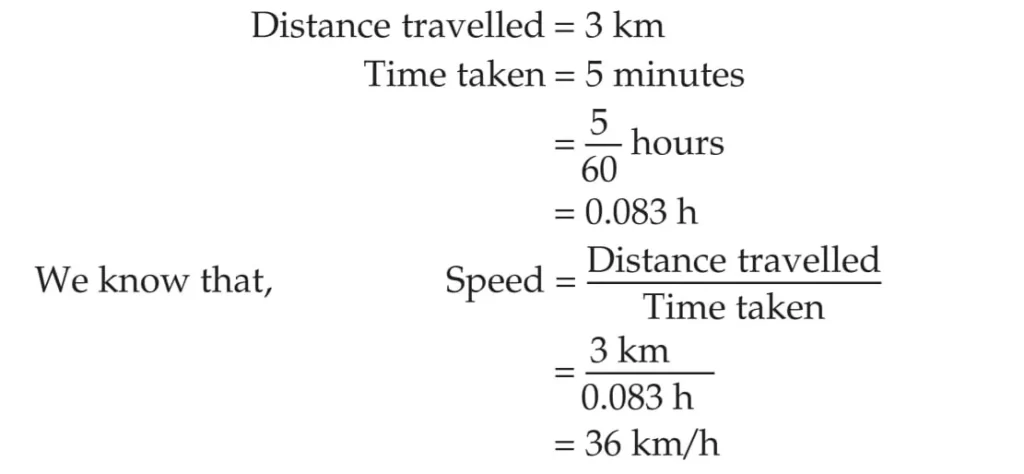Class 9 Force and Laws of Motion Notes
In this article, we will learn about force and laws of motion. This is the 2nd lecture of physics of class 9th. The notes given by us are very important for you because we have not kept any loophole in it. After reading this article all your doubts will be cleared. Also, you will not need any other reference book. You will get a very beautiful mark in your exam. If you need notes for any other topic, then you can tell us in the comments.
| Chapter Name | FORCE AND LAWS OF MOTION |
| Class | 9th |
| Language | English |
| Website | Allexamsolutions.in |
What is Force?
A push or pull on a body is called force. The direction in which a body is pushed or pulled is called the direction of force. We open or close a door by applying force. Now, when we push the door to open it, we apply a force on the door in a direction away from us. And when we pull the door to close it, then we exert a force on the door in a direction towards us.
Forces are used in our everyday actions like pushing, pulling, lifting, stretching, twisting, and pressing.
Effects of Force
A force cannot be seen. A force can be judged only by the effects which it can produce in various bodies (or objects) around us. A force can produce the following effects:
- A force can move a stationary body.
- A force can stop a moving body.
- A force can change the speed of a moving body.
- A force can change the direction of a moving body.
- A force can change the shape (and size) of a body.
Force can make a stationary body move and a force can make a moving body stop.
The speed of a falling ball (or any other falling body) increases because the earth applies a pulling force on it which is called the force of gravity.
Balanced and Unbalanced Force
Forces are of two types: Balanced forces and Unbalanced forces. We will now discuss balanced and unbalanced forces in detail, one by one.
Balanced force
If the resultant of all the forces acting on a body is zero, the forces are called balanced forces. A body under the action of balanced forces does not change its position of rest (or of uniform motion) and it appears as if no force is acting on it.
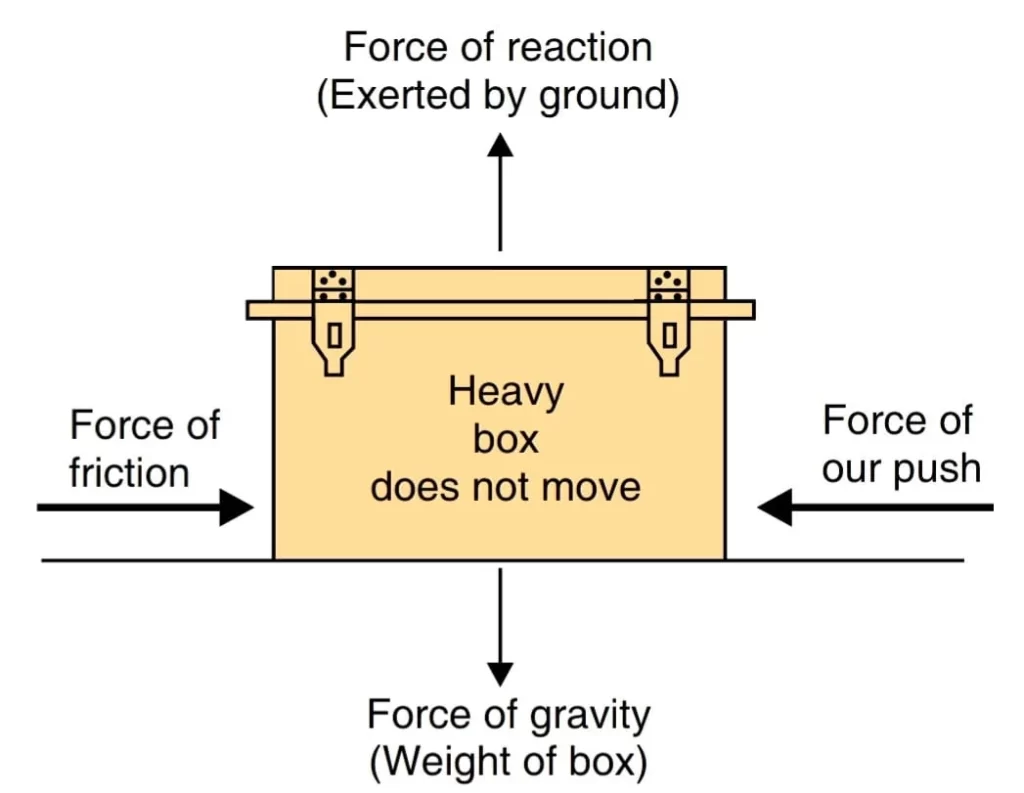
if a number of balanced forces act on a stationary body, the body continues to remain in its stationary position. Similarly, if a number of balanced forces act on a body in uniform motion, the body continues to be in its state of uniform motion.
Though balanced forces cannot produce motion in a stationary body or stop a moving body, they can, however, change the shape of the body.
Unbalanced Force
If the resultant of all the forces acting on a body is not zero, the forces are called unbalanced forces. When unbalanced forces act on a body, they produce a change in its state of rest or of uniform motion. That is, unbalanced forces can move a stationary body, or they can stop a moving body. In other words, unbalanced forces acting on a body can change its speed or direction of motion.
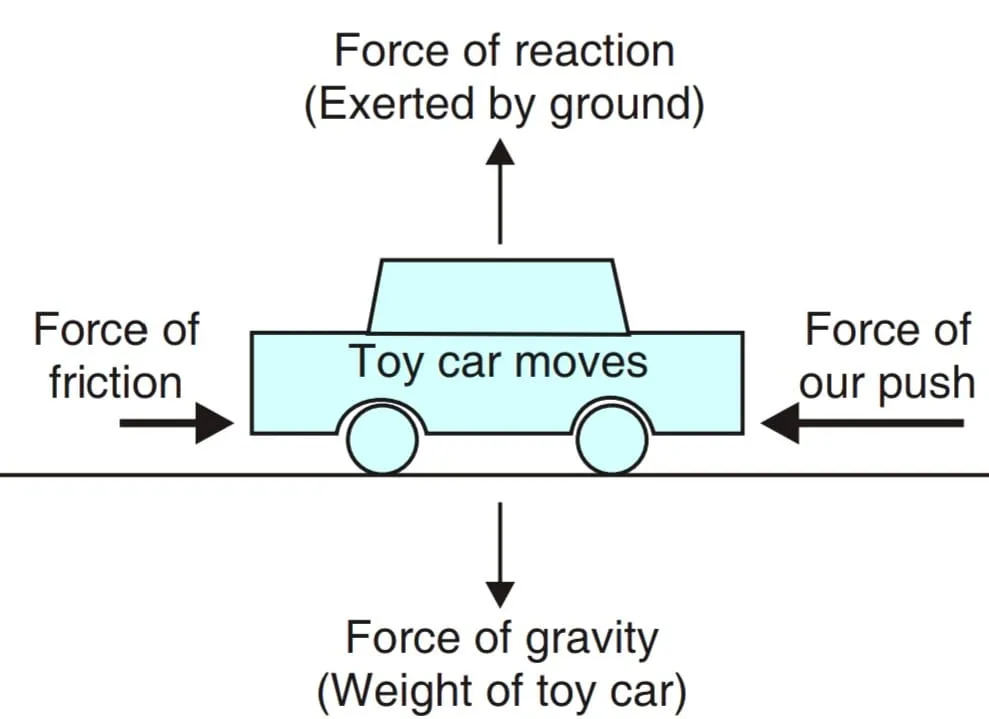
An unbalanced force acts on a body, it produces motion in the body. Another point to be noted is that an unbalanced force can also stop a moving body. For example, when a ball is rolling on the ground, an unbalanced force of friction acts on it which brings the ball to a stop after some time.
Read Also
Motion Class 9 Notes Science Chapter 8
Newton’s laws of Motion
Newton has given three laws to describe the motion of bodies. These laws are known as Newton’s laws of motion.
Newton’s 1st law of Motion
According to Newton’s first law of motion: A body at rest will remain at rest, and a body in motion will continue in motion in a straight line with a uniform speed, unless it is compelled by an external force to change its state of rest or of uniform motion.
Inertia is that property of a body due to which it resists a change in its state of rest or of uniform motion. Greater the inertia of a body, greater will be the force required to bring a change in its state of rest or of uniform motion. In fact, mass is a measure of the inertia of a body. If a body has more mass, it has more inertia. That is, heavier objects have more inertia than lighter objects.
the inertia of a body depends on its mass.
we know that to overcome the inertia and make a body move from rest, we must apply an external force.
We will now consider the second part of the first law of motion which says that a body in uniform motion will continue to move unless a force compels it to change its state of uniform motion in a straight line.
Applications of Newton’s first law of Motion
- When a hanging carpet is beaten with a stick, the dust particles start coming out of it.
- When a tree (having flexible stem) is shaken vigorously, its fruits and leaves fall.
- when a car or bus starts suddenly, the passengers fall backward.
- When a running car or bus stops suddenly, the passengers are jerked forward.
- When a car or bus turns a corner sharply, we tend to fall sideways.
- It is dangerous to jump out of a moving bus because the jumping man, who is moving with the high speed of the bus, would tend to remain in motion (due to inertia) even on falling to the ground and get hurt due to the resistance offered by ground.
Newton’s first law of motion gives us a definition of force. It says that a force is something which changes or tends to change the state of rest or of uniform motion of a body. In other words, a force is an influence which can produce an acceleration or retardation in a body. Force is a vector quantity having magnitude as well as direction.
Momentum
We know that the force required to stop a moving body is directly proportional to its mass.
the force required to stop a moving body is also directly proportional to its velocity. Thus, the quantity of motion in a body depends on the mass and velocity of the body. This gives us another term known as “momentum”. The momentum of a body is defined as the product of its mass and velocity.

if a body is at rest, its velocity is zero and hence its momentum is also zero. Thus, the total momentum of the gun and bullet before firing is zero because their velocity is zero. Momentum is a vector quantity and takes place in the direction of velocity.
the SI unit of momentum is kilogram metres per second which is written as kg.m/s or kg.m s-1.
Sample Problem. What is the momentum of a man of mass 75 kg when he walks with a uniform velocity of 2 m/s?
Solution. We know that:
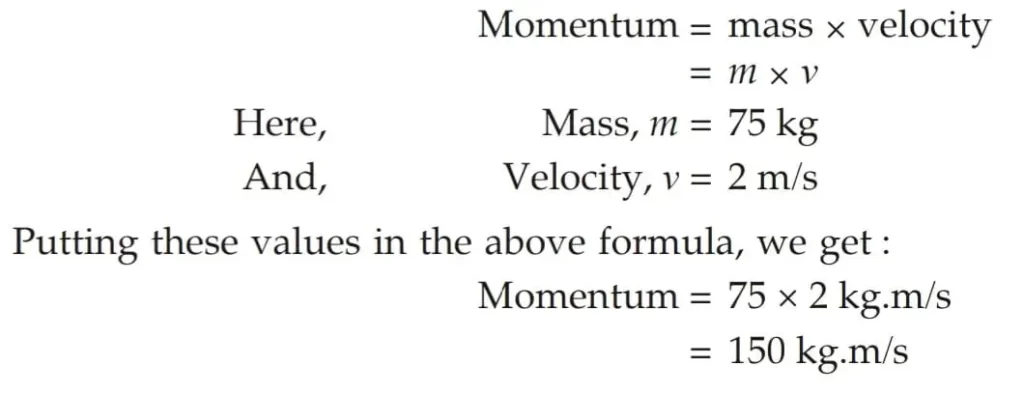
Newton’s Second law of Motion
According to Newton’s second law of motion: The rate of change of momentum of a body is directly proportional to the applied force and takes place in the direction in which the force acts. The rate of change of momentum of a body can be obtained by dividing the ‘Change in momentum’ by ‘Time taken’ for change. So, Newton’s second law of motion can be expressed as:

Newton’s second law of motion gives us a relationship between ‘force’ and ‘acceleration’.
Since the acceleration produced is inversely proportional to the mass of a body, therefore, if the mass of a body is doubled, its acceleration will be halved. And if the mass is halved then acceleration will get doubled (provided the force remains the same).
The SI unit of force is newton which is denoted by N. A newton is that force which when acting on a body of mass 1 kg produces an acceleration of 1 m/s2 in it.
Newton’s second law gives us a relationship between the force applied to a body and the acceleration produced in the body.
If a minus sign comes with the force, it will indicate that the force is acting in a direction opposite to that in which the body is moving (just as the force of friction acts in a direction opposite to that of the moving body).
Applications of Newton’s second law of Motion
Catching a cricket ball
A cricket player (or fielder) moves his hands backwards on catching a fast cricket ball. This is done to prevent injury to the hands.
The case of a high jumper
During athletics meet, a high jumping athlete is provided either a cushion or a heap of sand on the ground to fall upon. This is done to prevent injury to the athlete when he falls after making a high jump.
the cushion or sand, being soft, reduces the athlete’s momentum more gently.
The use of seat belt in cars
These days all the cars are provided with seat belts for passengers to prevent injuries in case of an accident. In a car accident, a fast-running car stops suddenly. Due to this the car’s large momentum is reduced to zero in a very short time.
Newton’s third law of Motion
According to Newton’s third law of motion: Whenever one body exerts a force on another body, the second body exerts an equal and opposite force on the first body.
To every action there is an equal and opposite reaction.
Applications of Newton’s third law of Motion
How do we walk?
When we walk on the ground, then our foot pushes the ground backward and, in return, the ground pushes our foot forward. The forward reaction exerted by the ground on our foot makes us walk forward.
the acceleration produced will be more in the body having less mass whereas the acceleration produced will be less in the body having more mass.
Why the gun recoils?
When a bullet is fired from a gun, the force sending the bullet forward is equal to the force sending the gun backward (Figure 33). But due to high mass of the gun, it moves only a little distance backward and gives a backward jerk or kick to the shoulder of the gunman. The gun is said to have recoiled.
The Flying of Jet Aeroplanes and Rockets
Jet aeroplanes utilise the principle of action and reaction. In the modern jet aircraft, the hot gases obtained by the rapid burning of fuel rush out of a jet (a nozzle) at the rear end (back end) of the aircraft at a great speed. The equal and opposite reaction of the backward going gases pushes the aircraft forward at a great speed.
The Case of a Boat and the Ship
During the rowing of a boat, the boatman pushes the water backwards with the oars. The water exerts an equal and opposite push on the boat which makes the boat move forward.
The Case of Hose Pipe
The backward movement of the hose pipe is due to the backward reaction of water rushing through it in the forward direction at a great speed.
The Case of Horse Pulling a Cart
So, to make the cart move, the horse bends forward and pushes the ground with its feet. When the forward reaction to the backward push of the horse is greater than the opposing frictional forces of the wheels, the cart moves.
In some cases, the two bodies can also exert force on each other even when they are not in contact with each other. That is, the interaction can also take place even when the two bodies are not in contact. In all such cases the forces of action and reaction are equal and opposite.
Conservation of momentum
According to the law of conservation of momentum: When two (or more) bodies act upon one another, their total momentum remains constant (or conserved) provided no external forces are acting. The law of conservation of momentum means that whenever one body gains momentum, then some other body must lose an equal amount of momentum.
This law can also be stated as: Momentum is never created or destroyed. The law of conservation of momentum is also known as the principle of conservation of momentum. The principle of conservation of momentum is in accord with Newton’s third law of motion which says that action and reaction (forces) are equal and opposite.
Force and Laws of Motion Class 9 Notes Questions Answers
Q1. What is the definition of force?
Answer- A push or pull on an object is called force.
Q2. Which physical quantity like the rate of change of momentum?
Answer- Force
Q3. If the mass of a body and the force acting on it are both doubled, what happens to the acceleration?
Answer- Acceleration remains the similar.
Q4. Title the physical quantity whose unit is ‘newton’.
Answer- Force
Q5. Which physical principle is involved in the working of a jet aeroplane?
Answer- Principle of conservation of momentum.
Q6. Is the following statement true or false: A rocket can push itself in a vacuum?
Answer- True
Q7. What is the force which produces an acceleration of 1 m/s2 in a body of mass 1 kg?
Answer- 1 newton (1N)
